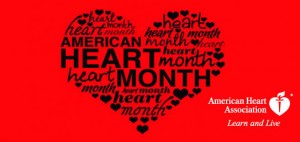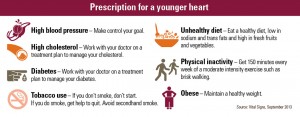Happy, Healthy Heart 
As an Ambassador for the American Heart Association, I wanted to remind everyone that February is American Heart Month. Sadly, someone in the U.S. has a stroke every 40 seconds. EVERY 40 seconds. Heart disease is real and it’s deadly.
- Control your weight
- Reduce your risk of cardiovascular disease
- Reduce your risk for type 2 diabetes and metabolic syndrome
- Reduce your risk of some cancers
- Strengthen your bones and muscles
- Improve your mental health and mood
- Improve your ability to do daily activities and prevent falls, if you’re an older adult
- Increase your chances of living longer
It can be a challenge to get started, but the benefits are too good to ignore. If you’re not sure about becoming active or boosting your level of physical activity because you’re afraid of getting hurt, the good news is that moderate-intensity aerobic activity, like brisk walking, is generally safe for most people. If it helps, don’t think of it as exercise. Physical activity simply means movement of the body that uses energy. Walking, gardening, briskly pushing a baby stroller, climbing the stairs, playing soccer and dancing are good examples of being active. For health benefits, physical activity should be moderate or vigorous intensity.
- Walking briskly (about 3½ miles per hour)
- Bicycling (less than 10 miles per hour)
- General gardening (raking, trimming shrubs)
- Dancing
- Golf (walking and carrying clubs)
- Water aerobics
- Canoeing
- Tennis (doubles)
- Running/jogging (5 miles per hour)
- Walking very fast (4½ miles per hour)
- Bicycling (more than 10 miles per hour)
- Heavy yard work, such as chopping wood
- Swimming (freestyle laps)
- Aerobics
- Basketball (competitive)
- Tennis (singles)
You can mix things up, participating in both moderate & vigorous intensity activities each week. It’s important to remember that only moderate and vigorous intensity activities count toward meeting your physical activity needs. If you are short on time, vigorous activities, provide similar health benefits in half the time it takes with moderate activities.




